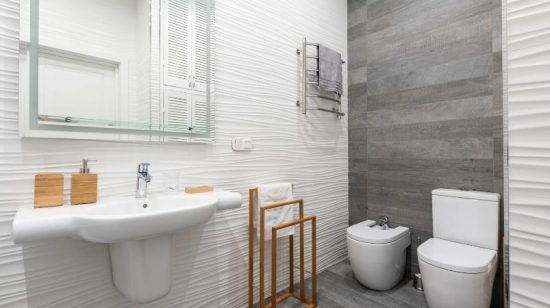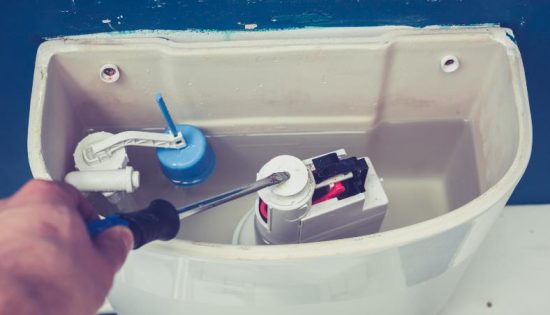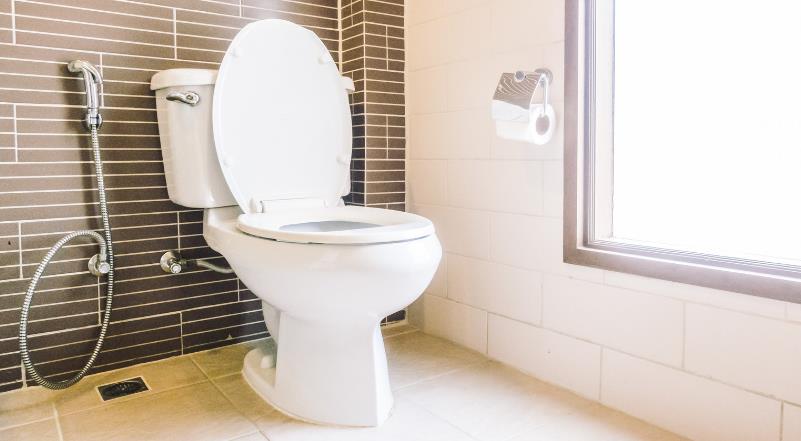Toilet Invention and Use
A significant development in sanitary engineering since its invention is the modern toilet. Its creation represents an important breakthrough in both urban planning and human health. It’s essential to understand the history of toilets when discussing how does a toilet works, starting with simple toilets and progressing to the complex systems we use today.
This innovation has provided convenience and privacy in addition to promoting hygiene. There has been a substantial advancement in technology from simple toilet bowls to completely automated flushing toilets. This development also highlights a more significant effort to enhance public restrooms worldwide.

The modern flush toilet was supposedly invented in 1596 by Sir John Harington, an English courtier, and Queen Elizabeth I’s godson. He devised a mechanism that included a wash-down design to empty the bowl and a flush valve to release water from the tank. Even though his creation did not take off immediately, it set the stage for further toilet innovations. In today’s world, restrooms are essential in many places, including public spaces, businesses, and private residences. They are necessary to protect privacy, uphold public health, and ensure waste is disposed of hygienically and effectively.
Types of Toilet
Different toilet styles are available now to accommodate various needs, tastes, and environmental concerns. The most popular type is the gravity-fed toilet, which flushes using the weight of the water. On the other hand, pressure-assisted models use pressurized air to increase flushing efficiency; their strong performance makes them perfect for commercial settings. Composting toilets are famous. They are environmentally friendly because they break down waste without using water, while up flush toilets are made for restrooms that are below grade and pump waste into higher sewage lines.
Each type has its unique mechanism tailored to specific situations and requirements. Wall-hung toilets save space and facilitate easier cleaning by being mounted off the floor, while smart toilets offer features like bidet washing, seat warming, and automatic flushing. Vacuum toilets often found on airplanes and in some eco-sensitive areas, use minimal water and a vacuum system to evacuate waste.
Portable toilets, a crucial amenity at outdoor events and construction sites, provide sanitation facilities where permanent structures are unavailable. Squat toilets, standard in many Asian countries, require users to squat rather than sit, aligning more closely with natural body mechanics. Each of these diverse types showcases the adaptability of toilet designs to various cultural and environmental contexts.
How Does a Toilet Work?
Tank
The portion of the toilet above and storing the water needed for flushing is called the tank. The tank releases water into the bowl when the flush lever is depressed. It has several essential parts, including the flapper, flush, and fill valve. The fill valve regulates and refills the tank’s water level following each flush. Thanks to the flush valve’s seal, water is kept in the tank until the flush is started. The flapper raises when it is actuated, letting water pour into the toilet bowl. This quick burst of water starts the flushing action, effectively emptying the bowl.
Bowl
The area of the toilet that people physically touch is the bowl. It holds water and attaches to a drain to remove waste. The bowl’s design produces a draining effect when moving waste and water into the sewage system during flushing. Also, the water in the bowl acts as a barrier to hinder sewer gases from entering the restroom. The force of the water from the tank pushes waste and water from the bowl into the tramway during a flush. Meanwhile, water from the tank rinses the sides of the bowl and cleans it as it empties. Clean water is finally added to the bowl to prepare for the subsequent use.
Flushing Mechanism
A lever or button that usually works a chain attached to the flapper initiates a toilet’s flushing mechanism. This device releases water in the tank into the bowl by lifting the flapper at the tank’s base when activated. In addition to cleaning the bowl, the rushing water creates a pumping effect that pushes the contents down the tramway. Alternative systems like buttons or sensors are sometimes used in modern toilets to provide touchless or dual-flush choices. These systems supply different amounts of water for liquid or solid waste to maximize water usage.
Trapway
The trapway is the snaking pathway in the toilet base that channels waste and water from the bowl to the household sewage system. Its S-shaped curve is designed to retain a small amount of water after every flush, which acts as a seal to protect sewer gases from entering the home. The width and smoothness of the tramway are crucial as they determine the bulk waste capacity and help prevent clogs.
During a flush, the water force pushes the contents through this curve, clearing the bowl. The design of the trapway must balance resistance to clogging with efficient waste movement. Proper maintenance and occasional cleaning are necessary to keep the tramway clear and functioning correctly. Its engineering reflects a critical balance of functionality, efficiency, and sanitation in toilet design.
Refill Valve

The refill valve, often known as the ballcock, is responsible for refilling the tank and bowl following each flush. It opens the valve to let fresh water into the tank when the water level drops, activated by a float that falls. The float rises as the tank fills and gently cuts off the water supply when it reaches a pre-set level. This system ensures the right amount of water for the subsequent flush. The refill valve, which stops overflows and underfills that might impair flushing effectiveness, is essential to the toilet’s water efficiency. The valve must be resistant to wear and silent in operation because it will cycle frequently over its lifetime. Regular observation and maintenance can increase the life of the refill valve and ensure consistent performance.
Conclusion
In essence, the operation of a toilet is a combination of simple mechanics and fluid dynamics. Once you understand the basic principles, the process behind how a toilet works becomes clear, highlighting the elegance of this everyday technology. Its design and operation, though often taken for granted, are fundamental to modern living, ensuring sanitary conditions and the convenience of indoor plumbing. This seemingly mundane fixture is pivotal in disease prevention and water conservation, underscoring its importance beyond mere convenience. As technology advances, the evolution of toilet systems continues to enhance their efficiency and environmental sustainability. Thus, the humble toilet meets basic human needs and reflects ongoing innovations in hygiene and ecological awareness.
FAQ on how does a toilet work
1. How often should you replace a toilet?
Most toilets can last 25 years or more, depending on usage and maintenance. However, you might consider replacing a toilet that frequently clogs, has cracks, or uses too much water per flush.
2. What are common signs that a toilet needs repair?
Common signs include constant running, weak flushing, leaks around the base, and noises after flushing. Persistent issues often indicate it’s time for parts replacement or professional repair.
3. Can any toilet fit in any bathroom?
No, toilets come in various sizes and configurations. Measuring your space, particularly the “rough-in” distance between the wall and the floor center or the bolts that hold the toilet in place, is essential to ensure a new toilet fits.
4. Are modern toilets more water-efficient?
Modern toilets are designed to use significantly less water than older models. Features like dual-flush technology allow users to choose between a lower or higher volume flush depending on waste type, which conserves water.
5. How do you unclog a toilet?
The first step is usually a plunger. If plunging doesn’t work, a toilet snake or auger can break up or retrieve obstructions. Chemical drain cleaners should be used as a last option due to their potential harm to plumbing.
Related Articles:

